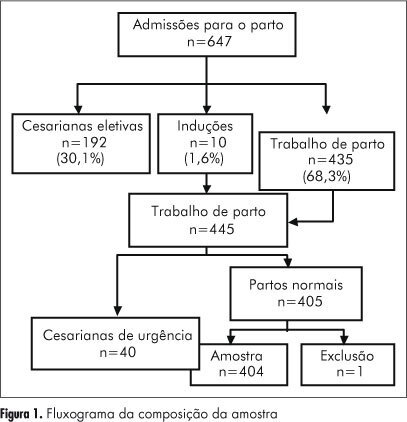Summary
Rev Bras Ginecol Obstet. 2013;35(10):447-452
DOI 10.1590/S0100-72032013001000004
PURPOSE: To analyze prenatal care in public and private services. METHODS: A cross-sectional, retrospective and analytic study was conducted based on the audit of files of pregnant women who had given birth at a reference hospital for low risk cases in the area of Campos Gerais - Paraná State, in the first semester of 2011. The Yates chi-squared test or exact Fisher test were used to determine the association between the lack of registration files for pregnant women regarding prenatal assistance in the public and private services, with the level of significance set at p≤0.05. The quality of prenatal care was determined based on the percentile of non-registrations. RESULTS: A total of 500 prenatal files were analyzed. There was a significant attendance of six or more prenatal visits, with a larger proportion in the private service (91.9%). The laboratory and obstetric exams most frequently not registered in the public and in the private services were, respectively: hepatitis B (79.3 and 48.4%), hemoglobin and hematocrit values (35.6 and 21.8%), anti-HIV serology (29.3 and 12.9%), fetal movement (84.3 and 58.9%) and length (60.4 and 88.7%), edema verification (60.9 and 54.8%), and fetal presentation (52.4 and 61.3%). The audit of the files of pregnant women allowed to determine the quality of the prenatal care provided and confirmed differences in assistance according to the place, showing excellent and good quality of private care, and regular public care for ultrasonography and blood type/Rh factor; regular quality of private care and poor quality of public care for urine tests and weight. For the other types of laboratory and obstetric exams and vaccines, the quality was poor or very poor in both types of services. CONCLUSION: The differences between the services showed that there is a need for actions aiming at the improvement of the prenatal care provided by public services.
Summary
Rev Bras Ginecol Obstet. 2011;33(10):297-304
DOI 10.1590/S0100-72032011001000005
PURPOSE: To evaluate the quality of health care assistance during childbirth in the hospitals of Goiânia, in Brazil. METHODS: Thirteen hospitals were appraised from April to December 2007, and a random sample of 404 normal births was studied. Data were obtained from interviews with mothers after delivery and by consulting their medical records. The quality of assistance at birth was evaluated by using the Bologna score and by comparing the procedures used in those hospitals to standard recommended practices. RESULTS: The Bologna score presented an average value of 1.04 (95%CI=0.9-1.1). The elective caesarian rate was 30%, the emergency caesarian rate was 10%, and the rate of induced childbirth was 1.6% The percentage of childbirths attended by health care professionals was 100%, but pediatricians in the delivery room were present only in 30% of the time. During labor, half of the women had no evaluation of the uterine dynamics and 29% had no auscultation fetal monitoring. The partogram was used for only 28.5% of the women, whereas the use of oxytocin was 45.8%. CONCLUSIONS: The results indicate a poor quality of childbirth care with low values of the Bologna score, high elective and emergency caesarians rates, a high number of unnecessary and potentially harmful interventions, and an insufficient frequency of beneficial interventions.
